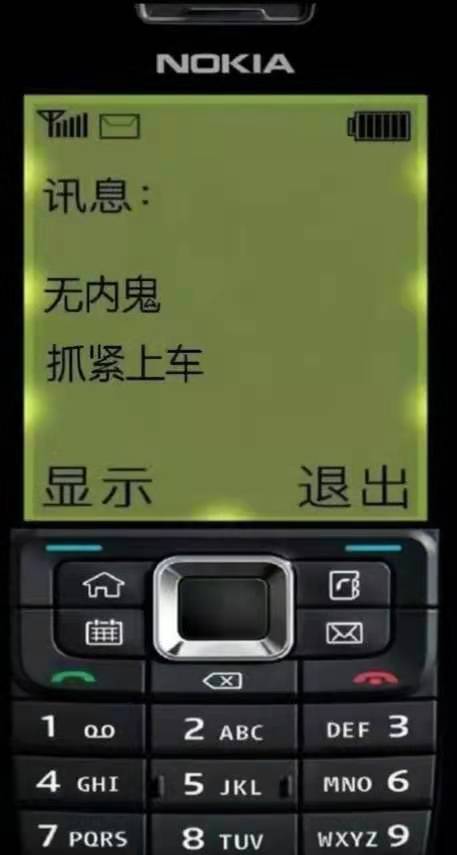這裡給大家分享我在網上總結出來的一些知識,希望對大家有所幫助 1. 防抖節流 這也是一個經典題目了,首先要知道什麼是防抖,什麼是節流。 防抖: 在一段時間內,事件只會最後觸發一次。 節流: 事件,按照一段時間的間隔來進行觸發。 實在不懂的話,可以去這個大佬的Demo地址玩玩防抖節流DEMO // 防 ...
這裡給大家分享我在網上總結出來的一些知識,希望對大家有所幫助
1. 防抖節流
這也是一個經典題目了,首先要知道什麼是防抖,什麼是節流。
-
防抖: 在一段時間內,事件只會最後觸發一次。
-
節流: 事件,按照一段時間的間隔來進行觸發。
實在不懂的話,可以去這個大佬的Demo地址玩玩防抖節流DEMO
// 防抖
function debounce(fn) {
let timeout = null;
return function () {
// 如果事件再次觸發就清除定時器,重新計時
clearTimeout(timeout);
timeout = setTimeout(() => {
fn.apply(this, arguments);
}, 500);
};
}
// 節流
function throttle(fn) {
let flag = null; // 通過閉包保存一個標記
return function () {
if (flag) return; // 當定時器沒有執行的時候標記永遠是null
flag = setTimeout(() => {
fn.apply(this, arguments);
// 最後在setTimeout執行完畢後再把標記設置為null(關鍵)
// 表示可以執行下一次迴圈了。
flag = null;
}, 500);
};
}
這道題主要還是考查對 防抖 節流 的理解吧,千萬別記反了!
2.一個正則題
要求寫出 區號+8位數字,或者區號+特殊號碼: 10010/110,中間用短橫線隔開的正則驗證。 區號就是三位數字開頭。
例如 010-12345678
let reg = /^\d{3}-(\d{8}|10010|110)/g
這個比較簡單,熟悉正則的基本用法就可以做出來了。
3. 不使用a標簽,如何實現a標簽的功能
// 通過 window.open 和 location.href 方法其實就可以實現。 // 分別對應了a標簽的 blank 和 self 屬性
4. 不使用迴圈API 來刪除數組中指定位置的元素(如:刪除第三位) 寫越多越好
這個題的意思就是,不能迴圈的API(如 for filter之類的)。
var arr = [1, 2, 3, 4, 5, 6, 7, 8, 9, 10]
// 方法一 : splice 操作數組 會改變原數組
arr.splice(2, 1)
// 方法二 : slice 截取選中元素 返回新數組 不改變原數組
arr.slice(0, 2).concat(arr.slice(3,))
// 方法三 delete數組中的元素 再把這個元素給剔除掉
delete arr[2]
arr.join("").replace("empty", "").split("")
5. 深拷貝
深拷貝和淺拷貝的區別就在於
- 淺拷貝: 對於複雜數據類型,淺拷貝只是把引用地址賦值給了新的對象,改變這個新對象的值,原對象的值也會一起改變。
- 深拷貝: 對於複雜數據類型,拷貝後地址引用都是新的,改變拷貝後新對象的值,不會影響原對象的值。
所以關鍵點就在於對複雜數據類型的處理,這裡我寫了兩種寫法,第二中比第一種有部分性能提升
const isObj = (val) => typeof val === "object" && val !== null;
// 寫法1
function deepClone(obj) {
// 通過 instanceof 去判斷你要拷貝的變數它是否是數組(如果不是數組則對象)。
// 1. 準備你想返回的變數(新地址)。
const newObj = obj instanceof Array ? [] : {}; // 核心代碼。
// 2. 做拷貝;簡單數據類型只需要賦值,如果遇到複雜數據類型就再次進入進行深拷貝,直到所找到的數據為簡單數據類型為止。
for (const key in obj) {
const item = obj[key];
newObj[key] = isObj(item) ? deepClone(item) : item;
}
// 3. 返回拷貝的變數。
return newObj;
}
// 寫法2 利用es6新特性 WeakMap弱引用 性能更好 並且支持 Symbol
function deepClone2(obj, wMap = new WeakMap()) {
if (isObj(obj)) {
// 判斷是對象還是數組
let target = Array.isArray(obj) ? [] : {};
// 如果存在這個就直接返回
if (wMap.has(obj)) {
return wMap.get(obj);
}
wMap.set(obj, target);
// 遍歷對象
Reflect.ownKeys(obj).forEach((item) => {
// 拿到數據後判斷是複雜數據還是簡單數據 如果是複雜數據類型就繼續遞歸調用
target[item] = isObj(obj[item]) ? deepClone2(obj[item], wMap) : obj[item];
});
return target;
} else {
return obj;
}
}
這道題主要是的方案就是,遞歸加數據類型的判斷。
如是複雜數據類型,就遞歸的再次調用你這個拷貝方法 直到是簡單數據類型後可以進行直接賦值
6. 手寫call bind apply
call bind apply的作用都是可以進行修改this指向
- call 和 apply的區別在於參數傳遞的不同
- bind 區別在於最後會返回一個函數。
// call
Function.prototype.MyCall = function (context) {
if (typeof this !== "function") {
throw new Error('type error')
}
if (context === null || context === undefined) {
// 指定為 null 和 undefined 的 this 值會自動指向全局對象(瀏覽器中為window)
context = window
} else {
// 值為原始值(數字,字元串,布爾值)的 this 會指向該原始值的實例對象
context = Object(context)
}
// 使用Symbol 來確定唯一
const fnSym = Symbol()
//模擬對象的this指向
context[fnSym] = this
// 獲取參數
const args = [...arguments].slice(1)
//綁定參數 並執行函數
const result = context[fnSym](...args)
//清除定義的this
delete context[fnSym]
// 返回結果
return result
}
// call 如果能明白的話 apply其實就是改一下參數的問題
// apply
Function.prototype.MyApply = function (context) {
if (typeof this !== "function") {
throw new Error('type error')
}
if (context === null || context === undefined) {
// 指定為 null 和 undefined 的 this 值會自動指向全局對象(瀏覽器中為window)
context = window
} else {
// 值為原始值(數字,字元串,布爾值)的 this 會指向該原始值的實例對象
context = Object(context)
}
// 使用Symbol 來確定唯一
const fnSym = Symbol()
//模擬對象的this指向
context[fnSym] = this
// 獲取參數
const args = [...arguments][1]
//綁定參數 並執行函數 由於apply 傳入的是一個數組 所以需要解構
const result = arguments.length > 1 ? context[fnSym](...args) : context[fnSym]()
//清除定義的this
delete context[fnSym]
// 返回結果 //清除定義的this
return result
}
// bind
Function.prototype.MyBind = function (context) {
if (typeof this !== "function") {
throw new Error('type error')
}
if (context === null || context === undefined) {
// 指定為 null 和 undefined 的 this 值會自動指向全局對象(瀏覽器中為window)
context = window
} else {
// 值為原始值(數字,字元串,布爾值)的 this 會指向該原始值的實例對象
context = Object(context)
}
//模擬對象的this指向
const self = this
// 獲取參數
const args = [...arguments].slice(1)
// 最後返回一個函數 並綁定 this 要考慮到使用new去調用,並且bind是可以傳參的
return function Fn(...newFnArgs) {
if (this instanceof Fn) {
return new self(...args, ...newFnArgs)
}
return self.apply(context, [...args, ...newFnArgs])
}
}
7. 手寫實現繼承
這裡我就只實現兩種方法了,ES6之前的寄生組合式繼承 和 ES6之後的class繼承方式。
/**
* es6之前 寄生組合繼承
*/
{
function Parent(name) {
this.name = name
this.arr = [1, 2, 3]
}
Parent.prototype.say = () => {
console.log('Hi');
}
function Child(name, age) {
Parent.call(this, name)
this.age = age
}
// 核心代碼 通過Object.create創建新對象 子類 和 父類就會隔離
// Object.create:創建一個新對象,使用現有的對象來提供新創建的對象的__proto__
Child.prototype = Object.create(Parent.prototype)
Child.prototype.constructor = Child
}
/**
* es6繼承 使用關鍵字class
*/
{
class Parent {
constructor(name) {
this.name = name
this.arr = [1, 2, 3]
}
}
class Child extends Parent {
constructor(name, age) {
super(name)
this.age = age
}
}
}
補充一個小知識, ES6的Class繼承在通過 Babel 進行轉換成ES5代碼的時候 使用的就是 寄生組合式繼承。
繼承的方法有很多,記住上面這兩種基本就可以了!
8. 手寫 new 操作符
首先我們要知道 new一個對象的時候他發生了什麼。
其實就是在內部生成了一個對象,然後把你的屬性這些附加到這個對象上,最後再返回這個對象。
function myNew(fn, ...args) {
// 基於原型鏈 創建一個新對象
let newObj = Object.create(fn.prototype)
// 添加屬性到新對象上 並獲取obj函數的結果
let res = fn.call(newObj, ...args)
// 如果執行結果有返回值並且是一個對象, 返回執行的結果, 否則, 返回新創建的對象
return res && typeof res === 'object' ? res : newObj;
}
9. js執行機制 說出結果並說出why
這道題考察的是,js的任務執行流程,對巨集任務和微任務的理解
console.log("start");
setTimeout(() => {
console.log("setTimeout1");
}, 0);
(async function foo() {
console.log("async 1");
await asyncFunction();
console.log("async2");
})().then(console.log("foo.then"));
async function asyncFunction() {
console.log("asyncFunction");
setTimeout(() => {
console.log("setTimeout2");
}, 0);
new Promise((res) => {
console.log("promise1");
res("promise2");
}).then(console.log);
}
console.log("end");
提示:
- script標簽算一個巨集任務所以最開始就執行了
- async await 在await之後的代碼都會被放到微任務隊列中去
開始執行:
- 最開始碰到 console.log("start"); 直接執行並列印出
start - 往下走,遇到一個 setTimeout1 就放到
巨集任務隊列 - 碰到立即執行函數 foo, 列印出
async 1 - 遇到 await 堵塞隊列,先
執行await的函數 - 執行 asyncFunction 函數, 列印出
asyncFunction - 遇到第二個 setTimeout2,
放到巨集任務隊列 - new Promise 立即執行,列印出
promise1 - 執行到 res("promise2") 函數調用,就是Promise.then。
放到微任務隊列 - asyncFunction函數就執行完畢, 把後面的列印 async2 會放到
微任務隊列 - 然後列印出立即執行函數的then方法
foo.then - 最後執行列印
end - 開始執行微任務的隊列 列印出第一個
promise2 - 然後列印第二個
async2 - 微任務執行完畢,執行巨集任務 列印第一個
setTimeout1 - 執行第二個巨集任務 列印
setTimeout2、 - 就此,函數執行完畢

畫工不好,能理解到意思就行




